Comprehensive Guide to Stair Nosing
Home and building design heavily depends on stair nosing because it provides essential safety features and visual appeal. Your ability to make an educated decision about stair nosing options will improve when you understand the different choices available for residential and commercial staircase installations. The complete stair nosing buying guide provides detailed information about stair nosing definitions and advantages and types and materials and selection factors and dimensions and installation and maintenance requirements to help you choose the most suitable option.

What Is Stair Nosing and Why Is It Important?
The front edge of stair treads extends outward to form stair nosing which typically consists of metal wood or rubber materials. The stair nosing functions to improve traction for safety purposes while safeguarding stair edges from deterioration and creating an attractive staircase appearance. Stair nosing installation helps prevent stair-related injuries because it reduces the risk of accidents and extends stair life while decreasing maintenance expenses. The installation of stair nosing helps you fulfill health and safety standards while reducing maintenance expenses and increasing stair durability.
Residential stair nosing serves to create a refined appearance but commercial and industrial facilities require it for managing heavy foot traffic. The combination of color contrast and slip-resistant features in stair nosing materials becomes essential for safe visibility in environments with low lighting and moisture such as hospitals and public transit areas. The absence of suitable stair nosing leads to fast deterioration of stair edges which produces dangerous conditions.
Types of Stair Nosing
Stair nosing comes in various designs to suit different flooring and aesthetic preferences. Common types include:
Flush Stair Nosing: Provides a seamless transition, ideal for hardwood or laminate floors in modern homes. It creates a clean, contemporary look without overhangs.
Overlap Stair Nosing: Suited for floating floors like engineered wood or laminate, allowing for expansion in varying humidity. Popular for DIY installations due to ease.
Metal Stair Nosing: Often textured for slip resistance, perfect for outdoor or high-traffic areas like offices or industrial sites.
Rounded or Bullnose: Features a curved edge to minimize injury from trips, commonly required in commercial buildings.
Square or Angular: Offers a sharp, modern edge but should include slip-resistant materials to avoid hazards.
Other variations like no-overhang or pencil-round provide subtle profiles for minimalist designs. Visualizing these can help; for example, square nosing suits straight edges, while full-round works well on carpeted stairs.
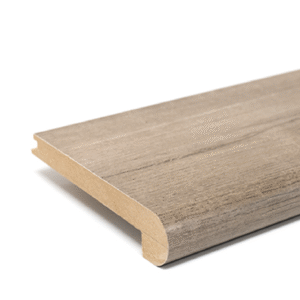
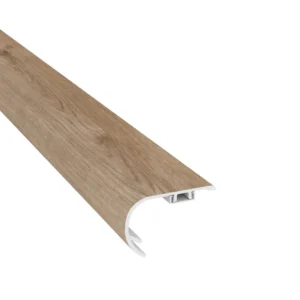

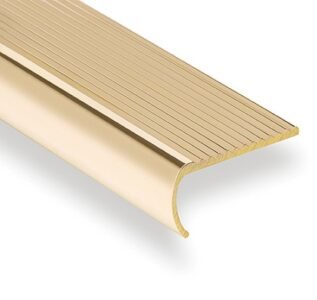
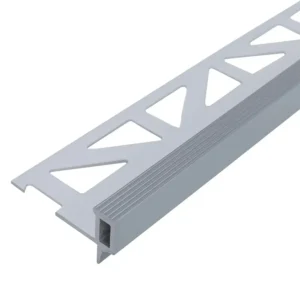
Stair Nosing Materials: A Detailed Comparison
Selecting the right material for stair nosing depends on durability, cost, and application. Here's a comprehensive comparison of popular options, based on pros, cons, and suitability:
Material | Pros | Cons | Suitable Traffic | Anti-Slip Features | Price per Step (USD) | Best For |
Aluminum | High strength, corrosion-resistant, lightweight | Limited designs, expensive | Heavy | Yes (inserts) | $37 | Commercial/Industrial |
Stainless Steel | Long lifespan, resistant to corrosion | Expensive, collects dirt | Heavy | Yes (inserts) | $54 | Industrial/Commercial |
Fiber Reinforced Plastic (FRP) | Economical, slip-resistant, customizable | Difficult to repair, not eco-friendly | Heavy | Yes | $37 | Commercial/Industrial |
Wood | Natural beauty, variety of colors | Sensitive to environment, discolors outdoors | Light | No | $30 | Residential (indoor) |
Rubber | Good traction against liquids, ideal for hard surfaces | Basic appearance, not for strong chemicals | Medium | Yes | $40 | Commercial/Residential |
Vinyl | Affordable, variety of textures | Short lifespan, not eco-friendly | Light | No | $10 | Residential (indoor) |
PVC | Lightweight, easy install, many variations | Fades outdoors, not eco-friendly | Light | No | $10 | Domestic/Residential |
Stone (e.g., Granite) | Weather-resistant, easy to clean | Labor-intensive install, expensive | Heavy | Yes | $45–$95 | Commercial/Industrial |
Chrome | Modern look, corrosion-resistant | Prone to scratches, expensive | Medium | Yes (inserts) | $64 | Commercial (indoor) |
This table highlights how metal options like aluminum excel in durability for busy areas, while wood and vinyl offer budget-friendly choices for homes. For eco-conscious buyers, note that materials like FRP and vinyl have environmental drawbacks, prompting some to prefer sustainable wood alternatives.
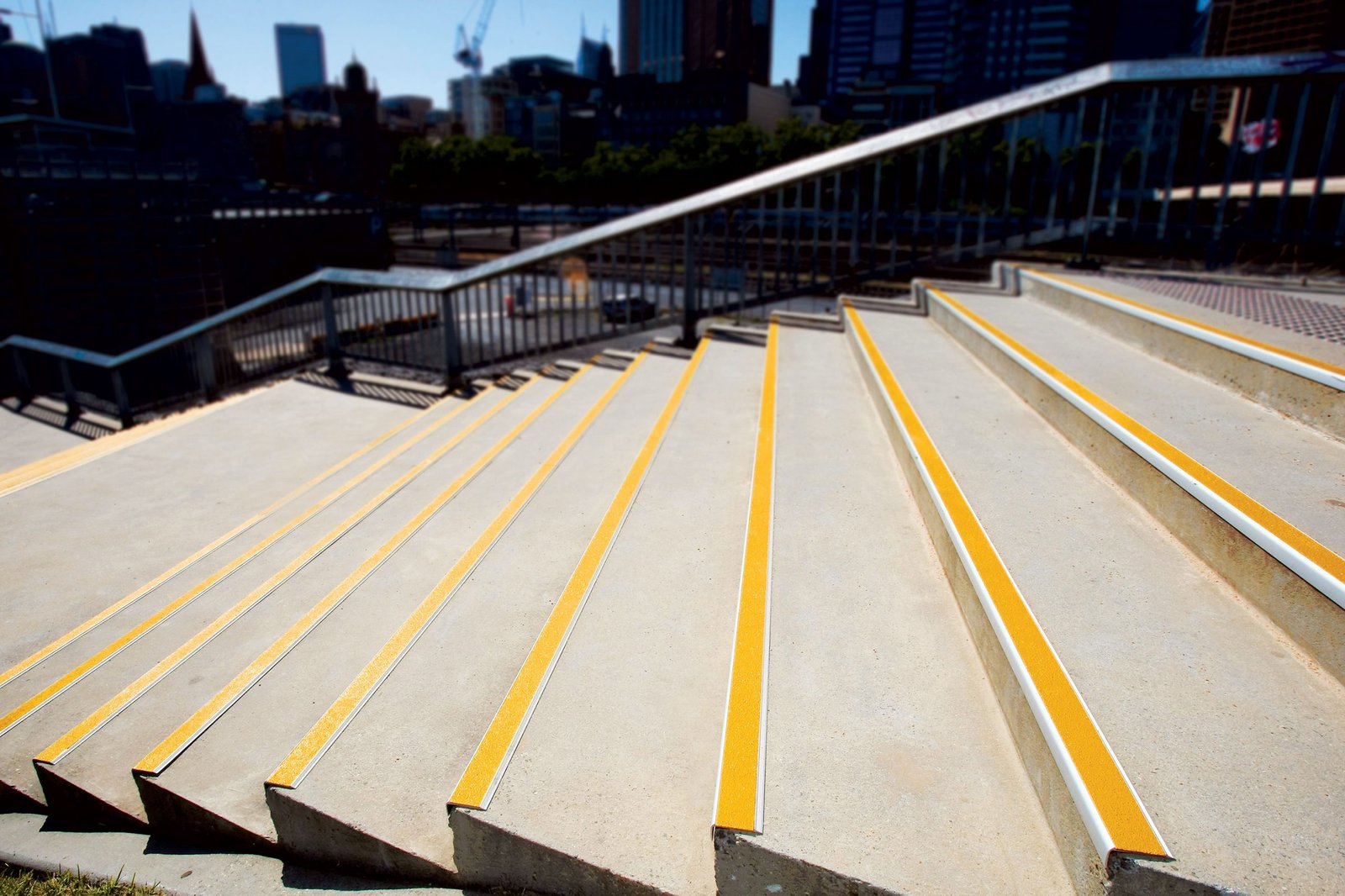
How to Choose the Best Stair Nosing
When buying stair nosing, consider these factors:
Traffic Level: High-traffic? Opt for aluminum or stainless steel. Light use? Vinyl or wood suffices.
Environment: Indoor vs. outdoor—metal or stone for weather resistance; rubber for moisture-prone areas.
Safety Needs: Look for slip-resistant inserts or photoluminescent strips in low-light settings.
Aesthetics and Matching: Ensure color and texture align with your flooring—e.g., match oak wood nosing to hardwood stairs.
Budget: Prices range from $10 for vinyl to $95 for stone per step.
Regulations: Check local codes; nosing should extend ¾–1¼ inches over the tread.
Measure your stairs accurately: width, depth, and tread thickness to avoid mismatches. For example, if your carpet is ¼-inch thick, select matching nosing to prevent trip hazards.
Stair Nosing Dimensions and Specifications
The typical length of stair nosing overhangs extends between 0.75 inches and 1.25 inches. The width of stair nosing matches tread dimensions between 36 and 48 inches while the depth depends on the specific type of nosing with flush being shallower than overlap. Verify the precise measurements of your stair nosing before buying to achieve a proper fit.
Installation Guide for Stair Nosing
Installing stair nosing is a manageable DIY task, taking about 3–4 hours. Tools needed: saw, adhesive, screws, tape measure.
- Prepare the surface: Clean and smooth the steps.
- Install risers first: Ensure they're flush.
- Cut nosing to size: Measure twice.
- Apply adhesive and screws: For secure hold.
- Allow curing: 1–2 hours.
- Clean up: Remove excess material.
Follow manufacturer instructions for best results. Professional installation is recommended for complex setups like stone.

Maintenance and Longevity
Stair nosing requires periodic cleaning with soap solution for maintenance but users should never use strong chemicals. Safety depends on regular inspections for damage because damaged stair nosing requires immediate replacement. The lifespan of metal stair nosing extends to multiple years with minimal maintenance requirements but wood nosing requires periodic sealing.
Potential Drawbacks and Considerations
The installation of stair nosing systems becomes dangerous when done incorrectly. The selection of recyclable materials for stair nosing systems becomes essential when environmental sustainability stands as a priority. The expense of stair nosing installation for extensive staircases becomes justified by the protective value it provides against injuries.
The stair nosing buying guide provides essential information to select products that combine safety features with design elements and functional requirements for your specific area.
Our Products
Latest Articles
Get A Free Sample
Try out the products you are interested in and get free samples. See the quality for yourself and let’s start working together right away.
Get In Touch Today
After you fill out the form, We will contact you within 24 hours.
The first objective will be to understand your needs, then develop a business plan together and provide you with the best pricing!
Address
Workshop No. 3 (Self - designated), Sizhong Industrial Zone, Dazhen Community, Dali Town, Nanhai District, Foshan City
Tel
+86 13392243769
+86 13392243769
senmry@vip.163.com







